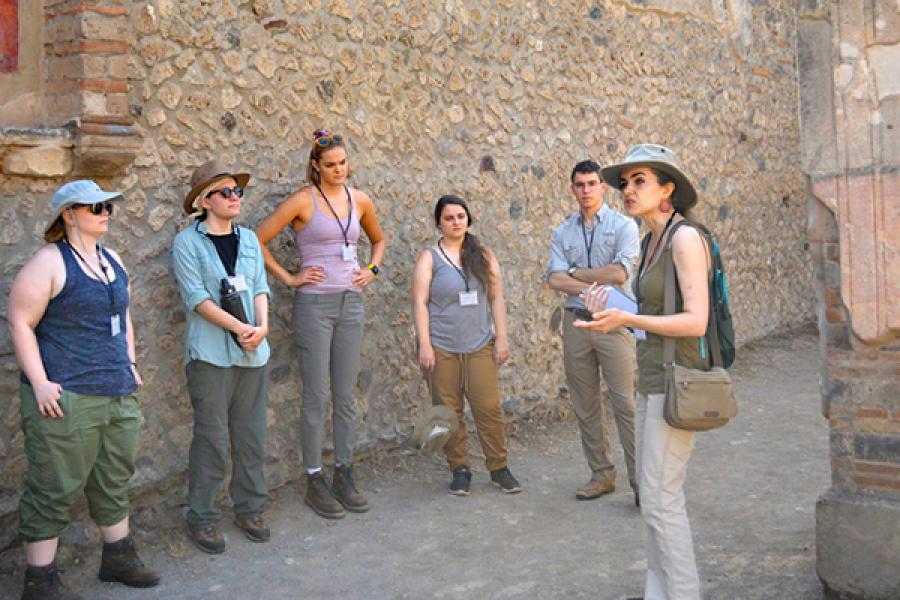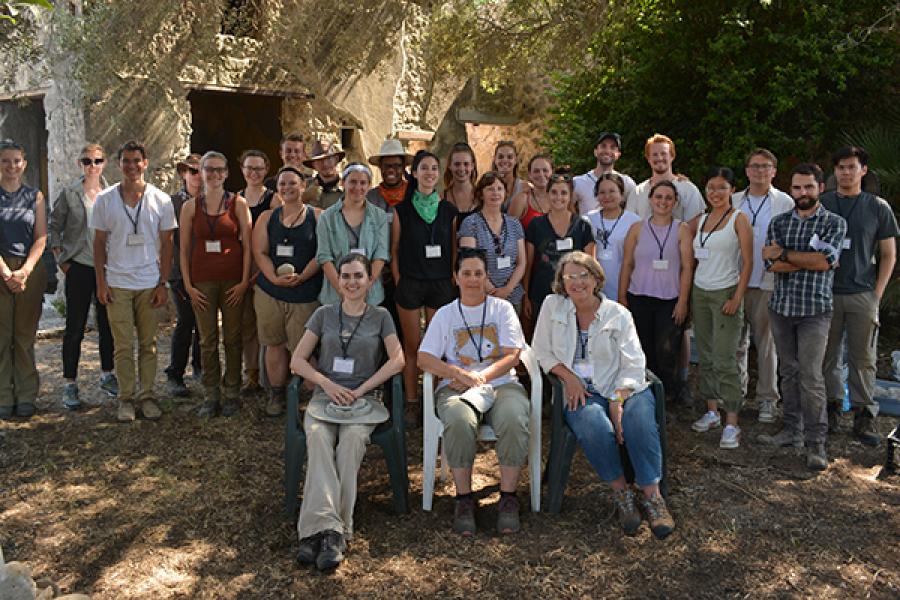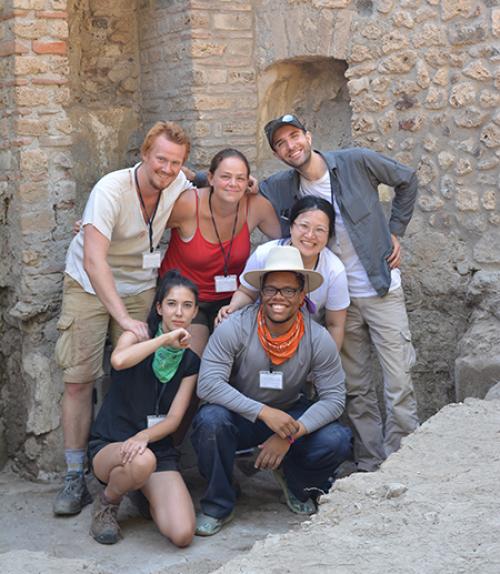Caitlín Barrett, associate professor of classics in the College of Arts and Sciences, has been named a National Geographic Explorer after receiving a grant from the National Geographic Society to study daily life in ancient Rome through archaeological research at Pompeii in modern-day Italy.
As a National Geographic Explorer, Barrett joins a global community of ground-breaking scientists, conservationists, educators and storytellers who are funded by the National Geographic Society for being “infinitely curious about our planet, committed to understanding it, and passionate about helping make it better,” according to the society.
Barrett co-directs the Casa della Regina Carolina (CRC) Project at Pompeii, arguably one of the most famous cities in the ancient world. Known as House VIII 3.14 in the numbering system used at Pompeii, Casa della Regina Carolina is an elite dwelling, one of the largest houses in the city and prominently placed near the Forum.
0303_barrett_600x400px.jpg
“The CRC Project’s first research goal is to ask how domestic material culture – the spaces and objects that people encountered every day in their houses – shaped life at Pompeii,” Barrett said. “Previous scholarship on the ancient Greco-Roman world has often portrayed history as being ‘made’ in the public sphere – on the battlefield, in the palace, in the temple – but this project aims to center everyday, domestic experience.”
A lot is known about Pompeii at the time it was destroyed, in 79 A.D. by the eruption of Mt. Vesuvius, Barrett said, but not as much is known about daily life in earlier periods.
“Pompeii wasn’t always a Roman city,” she said. “Before it was conquered by the Romans in 89 BCE, it was controlled by a different Italian people called the Samnites. By excavating below Roman levels, we can learn more about what life was like in these earlier times.”
During a three-year archaeological investigation, Barrett and collaborators, including project co-directors Kathryn Gleason ’79, professor of landscape architecture in Cornell’s College of Agriculture and Life Sciences, and Annalisa Marzano, professor of classics at the University of Reading, are documenting the house and excavating its large garden area.
dsc_0134_600x400px.jpg
At the Casa della Regina Carolina, much of the evidence from the house interior has been lost, but the garden area holds clues to the daily habits of the people who lived there.
“The garden provides one of our best opportunities to investigate some of the activities and experiences that took place in this household, from elite leisure activities (such as strolling, outdoor dining, or viewing ornamental horticulture) to practical activities likely performed by enslaved laborers (such as garden maintenance and irrigation),” Barrett said. “What activities actually took place in this garden, and what can they tell us about Roman gardens as spaces for social, economic and ritual performance? And what can we learn about the lived human experience of the unfree workers whose labor, time and bodies would have created and maintained this space?”
Many Cornell undergraduate and graduate students have participated in exploring the Casa della Regina Carolina. During the first two field seasons (summers of 2018 and 2019), teams of researchers from Cornell and other universities reconstructed many features of the 79 A.D. garden and discovered beneath it the remains of a house from the second or first century B.C., Barrett said.
dsc_0388_600x400px.jpg
A third summer in the field has been delayed until 2021 by the COVID-19 pandemic.
“This project uses excavation, survey and digital mapping to ask how Roman houses shaped their inhabitants’ lived experiences,” Barrett said. “In exploring the material remains of the past, we’re ultimately trying to better understand some of the most profoundly human aspects of life at Pompeii.”








